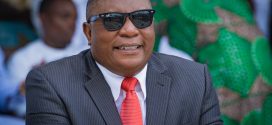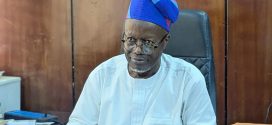The clearest statement yet on the fiscal plan Nigeria’s economy: The road to recovery – Blueprint by Kemi Adeosun, Finance Minister
To start by saying that the Nigerian economy is challenged is stating the obvious, but it is nevertheless, a very necessary statement especially at this period of our economic history. For an economy dependent on oil for 70 per cent of government revenues the 12-year low in oil prices, the downward revisions to the global outlook and the re-ordering of the global economy are ominous signs. It is instructive to understand how we arrived at this point. Indeed, we failed to put our house in order when we had the opportunities in the past. It is therefore important for us to understand why we fell in order to ensure that the lessons are learnt and for us to sustain the current mantra of “never again.” For years, oil prices were at historic highs and at US114 per barrel, we spent. Government spent; people spent and our economy seemingly “grew” but this growth masked many vulnerabilities.
There were consistent warnings about the volatility of oil prices and the need to diversify our economy to support our huge population. Whilst we paid lip service to this need and extolled the potentials of many sectors, we did not plan adequately to ensure that we worked towards this. As long as the oil gushed and the dollars flowed, we spent and even when prices fell, as in 2008 during the global slowdown, we continued spending, burning through our cash reserves in the hope of a future oil price recovery. Now that prices have fallen and the outlook is that prices will be “lower for longer,” we are forced to critically evaluate exactly what we spent our oil proceeds on. As we all now know, the “first line charge” went to those who simply treated the treasury as their personal funds and corruptly enriched themselves with seeming impunity. With what was left, we built a massive public sector engine at both national and state levels as a solution to unemployment rather than encouraging the private sector to create jobs by improving the investment climate.
As a result, we travelled, we trained, we printed and published, we articulated policy, we launched, and we lunched. Indeed, we undertook every economic activity that costs money, but we did not plan adequately. The results are painfully obvious for all to see and need no repetition here. Sadly, unlike the Saudis who have an estimated US$800M in cash reserves or the Emiratis who have built Dubai and reordered the regional economic dispensation, we have very little to show for our oil resources. We have a massive infrastructure deficit, huge unemployment and no fiscal savings to buoy the economy. The silver lining behind the present gloomy cloud is that our challenges have presented us with a “unique opportunity and we must seize it”.
Having taken this much economic pain, we have to reposition ourselves, and resist the temptation to do what we have so frequently done in the past- taking the easy route. Under the clear moral leadership of a President who believes in the best for Nigeria, we must refuse the lure of the short term pain killers and take the real medicine that will give us a permanent solution.Our focus is to stimulate the economy by the implementation of the draft 2016 budget.
Our economic strategy is therefore built on four pillars and these are:
*To stimulate the economy and achieve a real GDP growth rate of 4.2 per cent in 2017
*To reduce the cost of governance, extract efficiencies in public service and enhance revenue collections
*To increase government expenditure on infrastructure i.e. Transport, Roads, Housing and Power with a view to achieving a substantial increase in gross capital formation *To fund the budget deficit and the negative trade balance in a cost effective and efficient manner, which will keep us within the acceptable debt sustainable ratio that is expected of most emerging economies.
The sharp fall in the price of crude oil in 2015 has led us to adopt a multi-prong fiscal strategy aimed at achieving consolidation in the public finances, enhancing fiscal revenues and restoring the credit worthiness of the country. This is based on our commitment to the Keynesian model of countercyclical budget and spending to engineer a recovery in the slowing GDP growth of 2.34 per cent and to forestall the remote possibility of a recession in Africa’s largest democracy and economy. The budget of 2016 is based on a number of base case and realistic assumptions with built in flexibilities to deal with oil price volatility and shortfalls in estimated revenue stream. Our main macroeconomic objective is to use a government expenditure-led growth strategy in 2016, combined with a stimulant approach based on injections of more efficiently collected revenues and blocking of leakages.
The combination of these fiscal injections will have a catalytic multiplier effect on the GDP growth rate. The budget deficit is estimated at 2.2trn or 2.16 per cent of GDP based on an estimated benchmark oil price of $38pb. In view of present realities and the dynamics in the global oil markets, we have braced ourselves for the probability of a further decline in oil prices. Even though we believe the average price of oil in 2016 will recover, we have developed a shadow budgeting process with tactical responses to build in the flexibility in our borrowing needs. This way, we will not undermine the fundamental principle of the economic stimulus model used by countries facing a contraction in economic activities and growth.
As stated earlier, the present economic predicament where Nigeria is operating at sub-optimal levels, with a gap of four per cent between potential and real GDP growth can be traced back to waste, inefficiency and plundering of the Nigerian Treasury over the years. Our focus is not on looking backwards but to work our way out of the economic slowdown without creating a financial crisis. In the light of the 25 basis points increase in U.S. interest rates and the risk of reversal of capital flows, we are witnessing a decline in investment flows into Nigeria further exacerbating the external imbalances arising from the oil price shock. A very valid question being asked is ‘what are we going to do if oil prices fall further? We are firmly committed to the countercyclical budget expenditure model. Therefore, we will not reduce our investment in infrastructure i.e. Transport, Roads, Housing and Power. Our deficit will expand by N0.8trn to N3trn, which will be 3per cent of GDP. This is still within the comfort zone for the international rating agencies.
In 2008/09, our budget deficit expanded to 3.2per cent of GDP when the price of oil fell precipitously from approx. $130 to as low as $38pb. The deficit of 3.2per cent of the GDP in 2008 was in spite of the huge buffers of $22bn in the excess crude account and $53bn of External Reserves. Therefore, an expansionary fiscal policy was used effectively during the last global crisis. This time our buffers are much smaller but we are even more determined to ensure that the economy does not slip into a recession. ‘Our total borrowing expectations are now at N1.8trn. We hope to raise approximately $4.5 -5bn from multiple external sources. This includes multilateral agencies, export credit agencies and we are also planning to tap the Eurobond market. We are optimistic that we will receive the desired support after we adopt and implement a progressive economic reform agenda. In addition to the fiscal steps already outlined, there are numerous initiatives in a variety of sectors notably petroleum, manufacturing, solid minerals which are expected to create an enabling environment and attract foreign direct investment and portfolio flows and stimulate local investors’ interest. Another key question borders on how monetary policy complements our fiscal strategy.
We are confident that there will be greater coordination of fiscal and monetary policy. The monetary policy framework adopted by the Central Bank and driven by the monetary policy committee is based on an implicit inflation targeting with a band of 6-9 per cent. The nominal anchor is the monetary policy rate, which has just been reduced to 11 per cent p.a. This is 140 basis points higher than the inflation rate. The contentious issue of the exchange rate policy that will complement the fiscal policy of this administration will be a product of determining the real equilibrium exchange rate path of the Naira. The Finance Ministry expects that the monetary policy authorities will be in a position to determine the steps required to put the currency in equilibrium after considering a number of variables.
This will include but will not be limited to our terms of trade and elimination of waste, corruption and rent from the fiscal space. The monetary policy authorities will continue to use the necessary tools to reinforce our fiscal strategy to ensure monetary stability at a time of recovery in our economic growth trajectory. Our fiscal strategy is vulnerable to certain risks, which are known to us. The most potent being, as I earlier mentioned, an extended period of lower than expected oil prices. In the event that this occurs, we will bridge the revenue shortfall by sale of non-strategic assets and increasing the participation of the private sector in delivery of key projects. By pulling together to implement this budget, we will be doing at US$38 dollars a barrel what we failed to do $114 and above. It is an ambitious strategy but it is attainable. We may well feel the current discomfort for a little longer than we would prefer, but the long-term effects are potentially transformational.
 Hottestgistnaija.com
Hottestgistnaija.com





